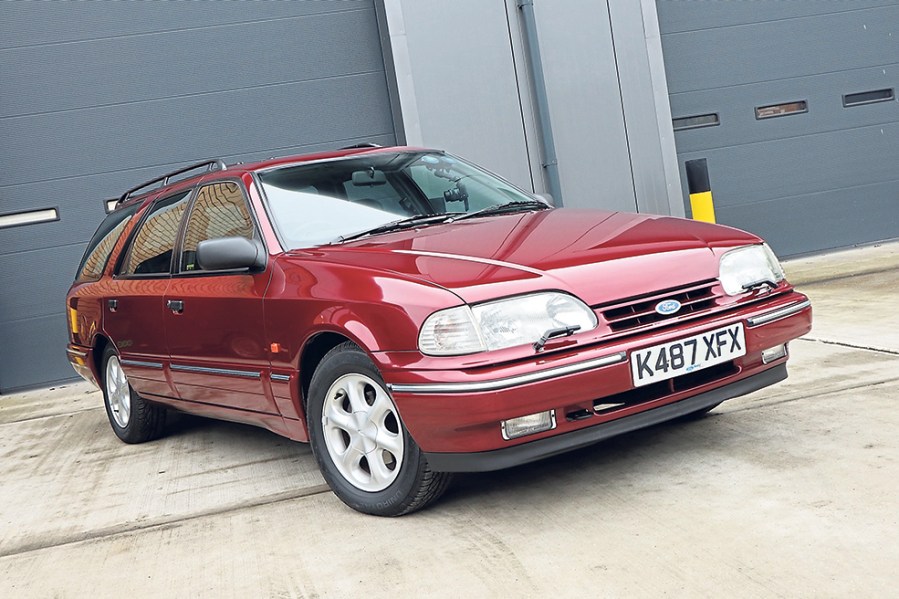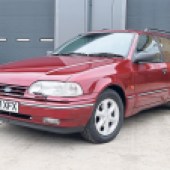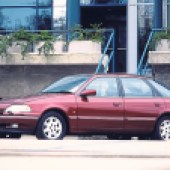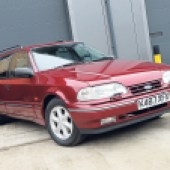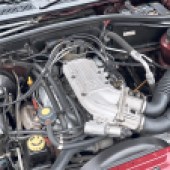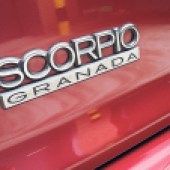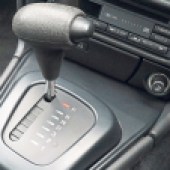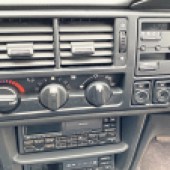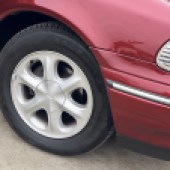Stylish, spacious and great value, the final car to wear the Ford Granada badge might just be your ideal executive classic. Here’s how to buy the best
Words: Chris Randall
Large executive cars from mainstream manufacturers have fallen out of fashion, but models like Ford’s range-topping Granada were once a symbol of how well you’d done for yourself. The first one arrived way back in 1972, but here we’re looking at the third generation that debuted in 1985 and lasted for almost a decade.
It had plenty of rivals, including premium German brands such as BMW, Audi and Mercedes, as well as executive models from the likes of Rover, Volvo and Vauxhall, but few could match its blend of space, comfort and attractive prices. The aerodynamic five-door hatchback styling was a departure from the norm (a saloon and estate would arrive later), but there was a wealth of engines and trim levels to choose from – plus the adoption of anti-lock brakes across the range, unique for the time. Opt for a V6 in Scorpio trim and you’d have a plush performer, while the Cosworth-fettled 24-valve was a proper executive express. There was even a 4×4 version, although this was a niche choice.
A facelift in 1992 freshened the looks and the Mk3 lasted for another two years before being replaced by a rather more divisive model. But does the big Ford still make sense today?
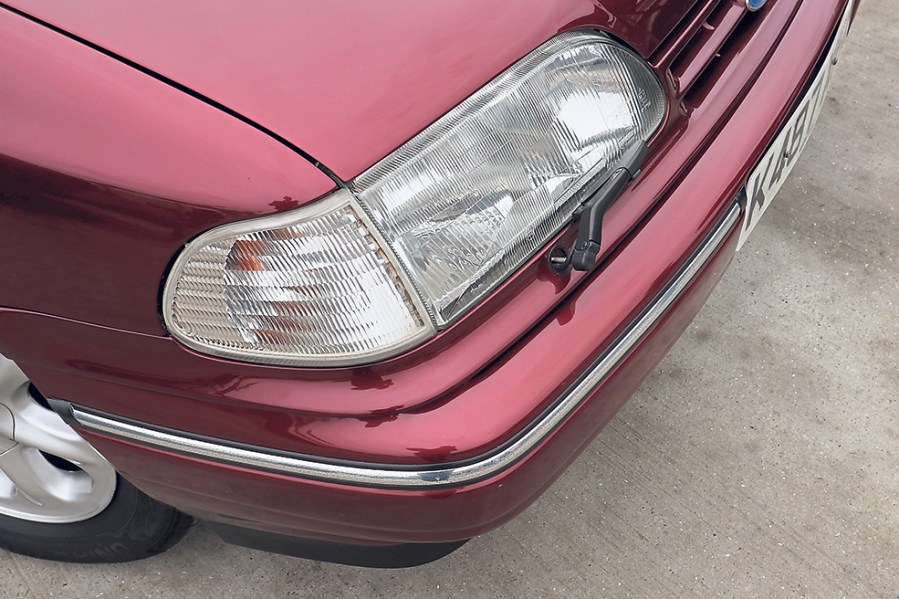
Bodywork
It might have started out as a range-topping executive car, but a few years of heavy depreciation and a decline into affordable family runabout (or even minicab) status won’t have done the bodywork any favours. Many Granada Mk3s ended up being scrapped as neglect and corrosion took their toll; and with even the youngest survivors now almost 30 years old, it’s clear that close inspection will be needed.
The usual scuffs, scrapes, dents and scruffy paintwork will be obvious, but all panels need a thorough check for the rot, with a particular focus on wings and wheelarches, door bottoms, screen surrounds and inner/outer sills. The latter are a common trouble spot and rust may have spread deeper into the floors. A thorough look underneath is vital, and will mean you can properly inspect the rear chassis crossmember and the rear section of the boot floor, both of which can could be looking distinctly frilly. You’ll also want to be certain that blocked sunroof drains haven’t allowed rot to set in.
Sourcing replacement panels and repair sections is likely to mean a hunt online for secondhand parts; and if you can find a complete but unroadworthy car that will yield some parts, then so much the better. Either way, major restoration of a Mk3 won’t be economically viable, so the most sensible course of action is to buy the smartest, most rot-free example you can find.
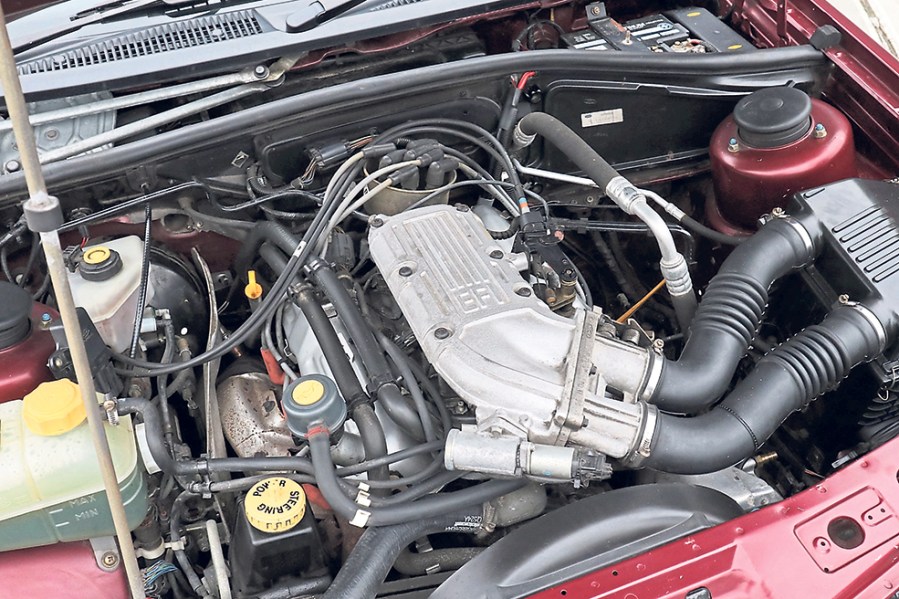
Engine and transmission
A variety of engines found their way beneath the Mk3’s bonnet, from 1.8- and 2.0-litre four-cylinder units to a V6 in short-lived 2.4 and more common 2.8 and 2.9 capacities. The four-cylinders are well-proven and broadly robust, if a little short on power and character for the large Granada; but with the potential for regular maintenance to have become a distant memory, it’s a case of carrying out the usual checks. A smoky exhaust along with oil and coolant leaks are the key things to look for, along with the clatter of worn valve-gear. Also, the 2.0-litre 8-valve unit is prone to suffering from head gasket failure, timing chain and tensioner wear, and problems with the distributor; make sure you pay particular attention to these areas.
The V6s suit the big Ford’s laid-back demeanour and, being fairly bulletproof, there’s little to worry about if repairs or an overhaul are needed. Keeping on top of oil changes and maintaining the cooling system will pay dividends for longevity; and while the Cosworth-fettled 2.9 24-valve unit is equally long-lived, it can suffer from wear in the timing chain guides and tensioners, so any evidence that these have been replaced is good news. As for the 2.5 diesel, it was reasonably frugal if lacking in refinement; and while it will soldier on for many miles, there can be issues with failure of the injectors and the fuel pump’s shut-off valve. The glow plug relay can burn out, too.
Manual gearboxes were MT75 units which last well with regular fluid changes, but make sure you check for the usual signs of whining bearings and weak synchromesh, along with a failed vehicle speed sensor. That last issue also afflicts the four-speed A4LD automatic, while lack of use can see the input shaft seal dry out and turn hard, resulting in fluid leaks when you do drive it again. The usual checks for jerky shifts and treacly fluid are needed, too. A whining back axle rarely fails completely, and changing the fluid may quieten it down.
Suspension, steering and brakes
The MacPherson strut front and semi-trailing arm rear suspension was thoroughly conventional and provided the Granada with a decent blend of ride and handling. You’ll soon hear any clonks and knocks on the test drive which point to worn joints and bushes, but an overhaul isn’t particularly difficult or expensive. And there’s the potential to fit more durable polyurethane bushes if you prefer. Check for any corrosion around mounting points, though, especially at the rear, and examine the front springs for breakage.
The brakes were standard fare and just need the usual checks for wear and neglect (consumables are easy to source and inexpensive) and for rotten pipework, but you’ll want to be certain the ABS system is working as it should. Repairs can end up being costly, so don’t part with any money until you’re satisfied with its operation.
There’s little to worry about with the steering, though, and it’s just a case of watching for excessive play and for leaks from the power-assistance hydraulics. Worn wheel bearings aren’t uncommon but they’re straightforward to replace and the parts are cheap; budget £40-£50 for a front or rear kit. Lastly, examine alloy wheels for damage and corrosion and for ancient tyres in need of replacement.
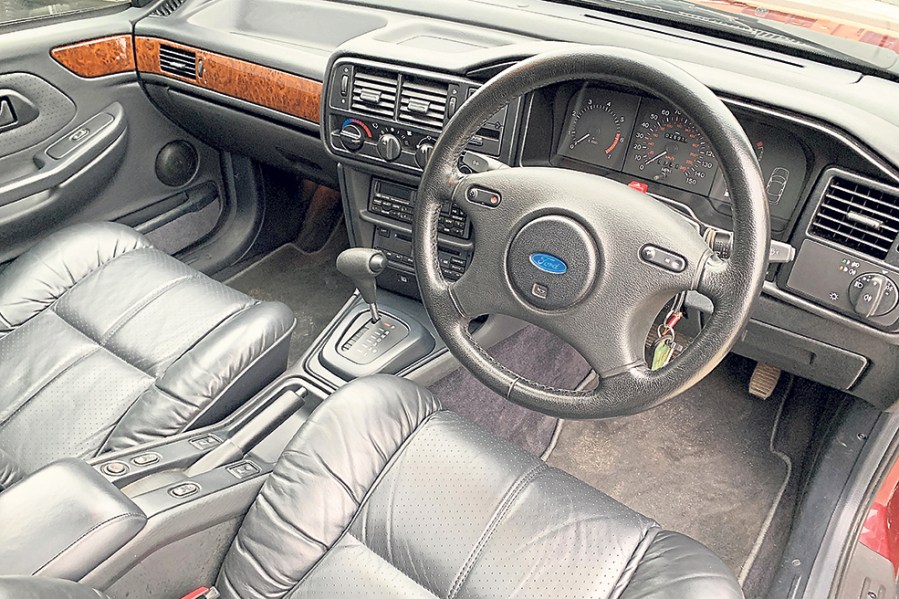
Interior, trim and electrics
The Granada impressed many buyers with its spacious, comfortable and refined cabin and a good example still feels pretty good today. It certainly makes for a very usable classic that’s ideal for longer trips; and while entry-level trims could feel a little basic, the same can’t be said for versions at the other end of the range. It’s here where you’ll find plump leather chairs, a smattering of wood and plenty of equipment which not only looks and feels a lot plusher but gives a definite feel-good factor from behind the wheel. Okay, so we’re not ones to be swayed by luxury trinkets over structural condition but it’s these models we’d seek out today for the proper executive experience. That said, all will need an inspection for the damage and decrepitude that signify many hard years and miles.
A professional trimmer can sort worn seat bolsters and the like, and secondhand trim is out there, but issues such as a cracked dash top can be trickier to sort. More lavishly-equipped models will need particular scrutiny when it comes to ensuring everything works, from the obvious such as electric windows and central locking to air conditioning, upgraded audio systems and electrically-adjustable seats. There’s plenty of scope for failure, and previous owners may simply not have bothered getting broken items fixed, so press every switch and button.
Check, too, for damp carpets – it could signal a leaking heater matrix, which is a pain to replace. As for the electrics more generally, it’s worth inspecting under-bonnet wiring as it’s prone to breaking up due to heat damage, while post-1992 facelifted models can suffer from water ingress into the auxiliary fuse box located beside the battery. The result is corrosion and all manner of frustrating electrical problems; if a car exhibits numerous failures, this could be why.
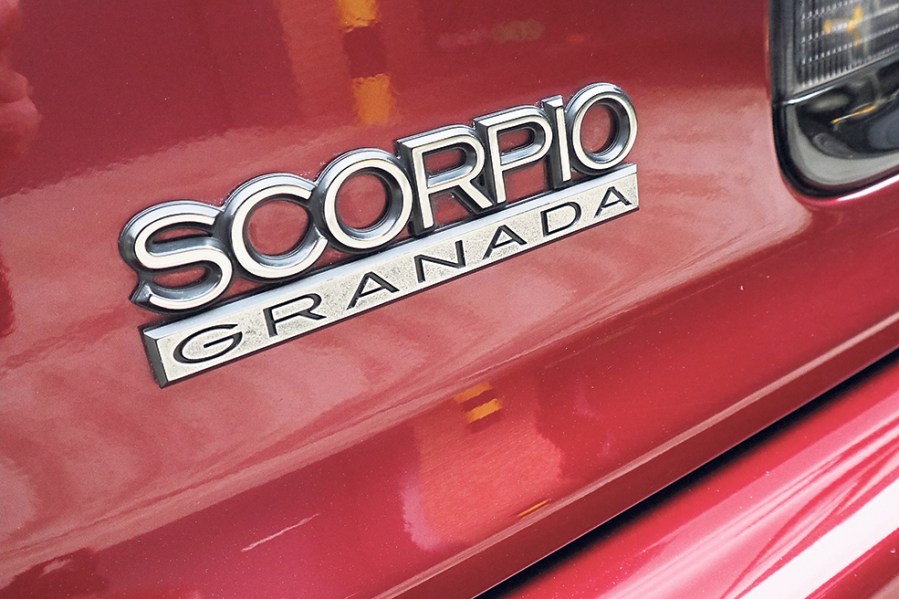
Ford Granada Mk3: our verdict
Large executive models like this Granada have always held plenty of appeal, and there used to be a wide choice available. That’s no longer the case, of course, but the big Ford always held its own among its numerous rivals – something that still holds true today. Anyone after a spacious and comfortable classic that could be used on a daily basis should certainly have this on their shopping list; and if it’s practicality you want, the cavernous estate should certainly fit the bill.
If there’s a potential downside to ownership, it’s that this version doesn’t benefit from quite the same level of support as earlier generations, so tracking down certain parts is going to be trickier. That said, most of the mechanical bits and consumables can be sourced with a little searching and regular maintenance won’t pose a problem for anyone who likes getting their hands dirty.
The important thing is finding a survivor that’s in sound condition and has benefited from ongoing care. Do that and you’ll end up with an affordable luxury motor that will prove perfect for covering big miles in comfort.
The hardest thing may be finding a Mk3 Granada for sale, as you won’t discover many in the classifieds, although we’ve seen a reasonable number pop up at auction over the last year or so. You might need to be patient when it comes to finding the right car, but when you do you’ll discover just how affordable the Mk3 is.
Scruffy ones without an MOT are unlikely to fetch more than £500–600, and just a little more than twice that will secure something in reasonable order that you can use and improve. Very good ones tend to top out at around £3500, although you’ll need to add another £1000 to that for a 24-valve V6 in nice condition. You’ll see more being asked for immaculate low-mileage examples, but whether they sell is another matter.
As for the situation going forwards, we can’t see values increasing all that much in the short term – so just focus on buying a good one and enjoying something of an unsung Ford hero.
Ford Granada Mk3 timeline
1985
The square-cut Mk2 Granada is replaced by an aerodynamic new hatchback; known as the Scorpio in Europe, the Granada badge is kept for the UK market.
1987
Ford adds a four-wheel drive version to the range; paired with a V6 engine and manual gearbox, it’s a niche choice and is dropped three years later.
1989
The Mk3 benefits from revised engines, including a larger 2.9-litre V6 and a more powerful and efficient twin-cam version of the 2.0.
1991
The biggest change is the arrival of the 24-valve V6 engine tweaked by Cosworth, offering 200bhp – enough for 0-60 in 8.1 seconds and 140mph.
1992
The Granada range is facelifted and an amazingly capacious estate is added to the range.
1994
Mk3 production ceases, marking the end of the Granada badge; its Scorpio saloon/estate replacement features styling that some find a little challenging…

